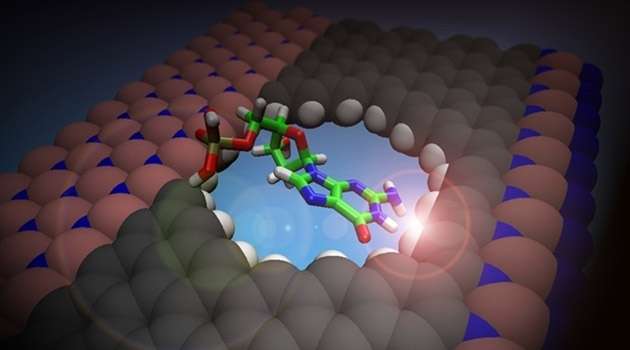Nanosensors Electronic properties of carbon nanotubes (CNT and CNTs) based on nanoelectronic electronics PHD (educational-research doctorate)
Researcher and author PhD student : Afshin Rashid
Note: The electronic properties of carbon nanotubes are highly sensitive to the chemical environment around the nanotubes. This sensitivity is a good tool for using nanotubes in the sensory part.
Nano-sensors using carbon nanotubes, single-walled semiconducting use of electronic navigation that the method of growth by CVD on the substrate and attaching a wire to the nanotubes and the metal / nanotube / metal can be nano- transistors, which can Change the effect of applying different voltages . The electrical conductivity of these nanotubes is used in the structure of the nanosensors and electronic nanostructures of single-walled carbon nanotubes . A reinforced semiconductor with a hole that reduces the electrical conductivity three times as a result of applying a positive gate voltage to this nanosensor system. In the presence of electronic nano-sensor guidance, the nano sensor band of the nano-tube capacity moves away from the Fermi surface. This leads to a decrease in the number of holes and, as a result, reduces electronic guidance . The formal energy of CNT and CNTs nanotubes is given to the capacity band. This increases the concentration of cavities in the nanotubes and thus improves the electrical conductivity in the nanosensors.
Carbon nanotubes have a similar structure to fullerene, the end of which can be quite large. The names of these nanostructures are derived from their physical form, in which a sheet of graphene-washed pipe with different tubing angles leads to pipes of different symmetry. The angle of piping and the radius of the pipe determine the occurrence of metal or semiconductor properties in these nanostructures. Nanotubes are divided into two categories: single-walled carbon nanotubes (SWCNTs) and multi-walled carbon nanotubes (MWCNTs). In multi-walled nanotubes, several graphene sheets have been piped. Carbon nanotubes naturally adhere to each other due to the effect of vandalism.
Conclusion:
Nano sensor nanoparticles based on single-stranded carbon SWNT nanotubes are less expensive than devices containing single nano-tubes. The samples SWNT mass, the effect of lower molecular interaction between the metal and semiconductor nanotubes. Also, the inner tubes in SWNT fields are unable to interact with gases because the molecules cannot penetrate the SWNT strands.
Author: PhD Student ( Afshin Rashid)




